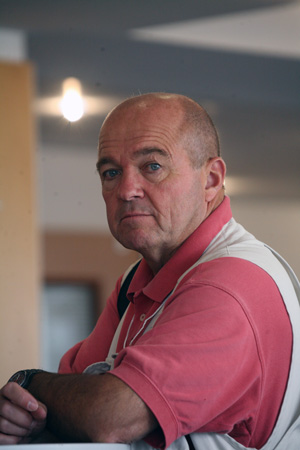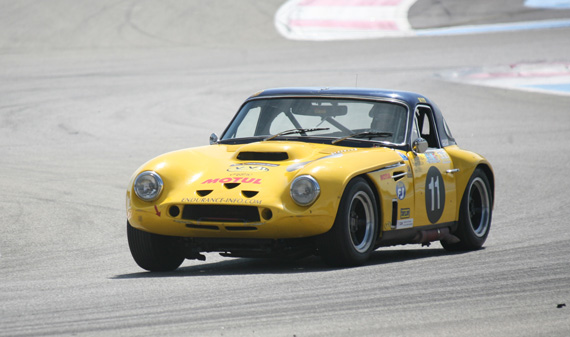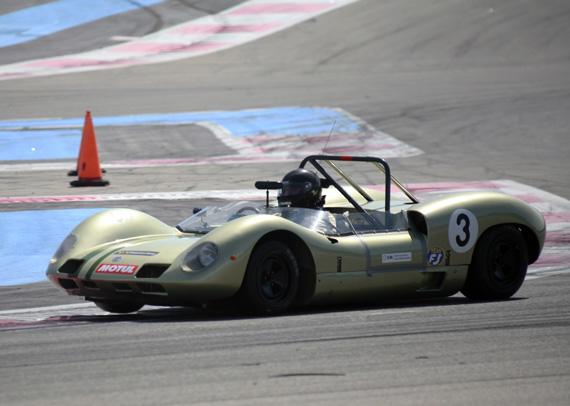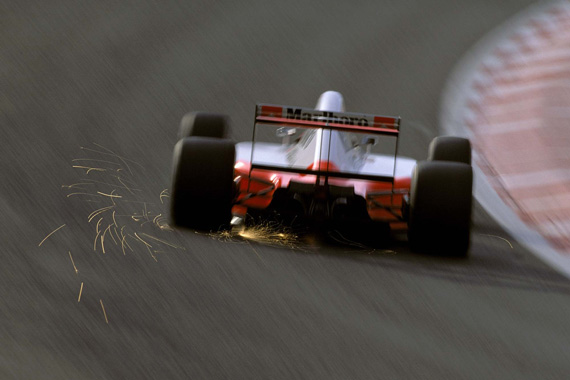
Change indeed. Bernard Asset's art. McLaren at Eau Rouge on the Spa circuit. F1 photography would never be the same again. Copyright Bernard Asset. All rights reserved.
By Graham Gauld
At a recent race meeting I met up with an old friend of over 25 years, the famed French Formula 1 photographer Bernard Asset. You may not have heard of him, but he completely changed the style of motor racing photography back in the 1970s.
When the French-based magazine Grand Prix International was founded in 1978, it devoted an entire issue to each Grand Prix and selected other events, notably Le Mans. This created a demand for variety and multitude of photos and Asset was ready to comply with his own unique vision of F1 racing.Born in 1955 Bernard Asset was brought up in Paris; his father was a keen and talented amateur photographer. From the age of 14 young Asset wanted to be a photographer, and as a young teenager at the photography school the teacher asked him what he wanted to do. He said he wanted to be a sports photographer and cover the Olympics. The teacher told him to forget it as they were training commercial photographers. the Olympics, including the 1992 Summer and Winter Olympics at Barcelona and Albertville. “You know, ski photography is very similar to photographing Formula 1,” he remarks.
At the age of 18 he rode his little Honda motorcycle from Paris to England to stay with friends and decided to go to Silverstone for the 1973 British Grand Prix for the Sunday race day and took a few shots. At the time he had a single lens reflex 6×6 Yashica Mat and a 35mm Pentax Spotmatic with a 135mm Soligor telephoto lens which he won in a photo competition organised by a motor cycle magazine in the Hommell Group. “ I met French driver Francois Cevert for the first time at that meeting and took a few photos of him in the Tyrrell grand prix car but of course he was killed later that year and so I never saw him again.”
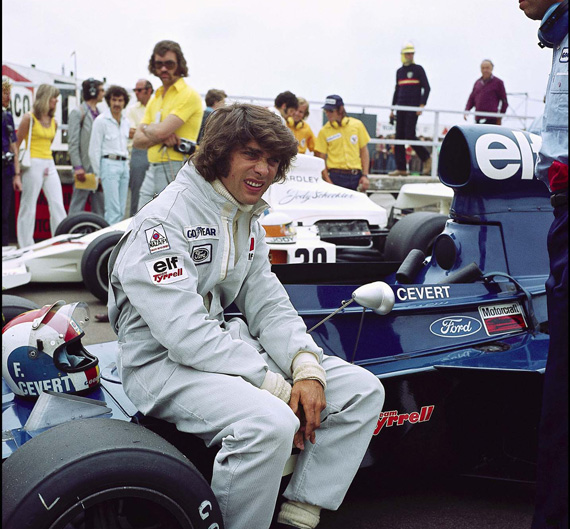
One of Bernard Asset's first Grand Prix photos taken at the 1973 British Grand Prix showing Francois Cevert who was tragically killed a few months later. The shot was taken with the 2 ¼ square Yashica Mat. Copyright Bernard Asset. All rights reserved.
After four years at photographic school Asset left France for the U.S. as his father was the French agent for the Jervis B. Webb company in Detroit. Thus Asset fell into the US auto racing scene with IROC and his photos were then published in a brand new weekly French motor sport magazine Auto Hebdo; even today he still takes photos for the magazine.
Back in France he started out in the photo lab at Auto Hebdo but was soon switched to racing photography. However, in 1979 Michel Hommell, the publisher, decided to produce an exclusive Formula 1 magazine called Grand Prix International and he chose Bernard Asset to be his chief photographer. “In the three years before GPI, I was using my own Nikon cameras but my equipment was stolen and the magazine did a deal with Canon in exchange for advertising and so I went into Grand Prix racing with two new Canon F1s, the new 300mm 2.8, the 500mm 4.5.”
For Grand Prix International, some of Bernard’s more creative photos were given double page spreads – often as many as five or six to an issue – and this is what made these shots so stunning. “ Unlike most of the other photographers, I was not really a motor racing enthusiast but a photo enthusiast so I was always looking for nice pictures. Also human pictures and the scenery.”
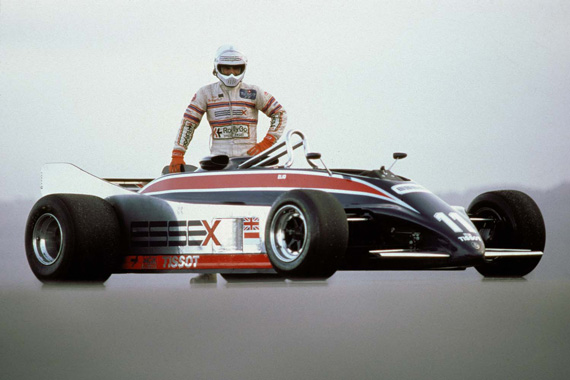
Ethereal image of Elio De Angelis with his Lotus. The de Angelis picture was taken after a test session at Laguna Seca and is one of Asset's favorites. Just before the race the Lotus 88 was banned. Copyright Bernard Asset. All rights reserved.
Asset’s heir and protégé Darren Heath recalls those years. “I first became aware of his work – as so many others did – by seeing it in Grand Prix International (I still have every copy I bought!). I loved the way he used to shoot, bringing to life the colour, emotion, sound, speed and spectacle that modern day Formula One was then as now.”
In those years, when I saw him working at trackside, he was always alone and was rarely around other photographers on the track. “That’s true, it is part of my character in that I like to be alone and it is quite normal; if I found ten or twelve photographers at one corner I would go somewhere else. You must remember that even with the best equipment a photographer has to have the ‘eye’ for a photo. Also, I like to frame the photograph in the camera as I would like it to appear but today, with digital, you can do all sorts of things.”
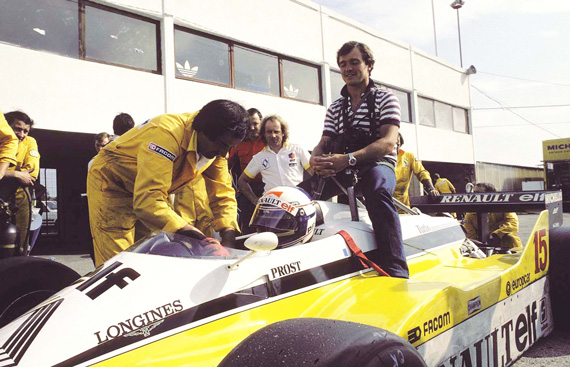
Perched precariously on the engine cover of Alain Prost's Renault GP car before going out on the circuit. Doubt if health and safety would allow it today. Copyright Bernard Asset. All rights reserved.
Thanks partly to his friendship with Eric Bhat, press officer for Renault Sport and former editor of Grand Prix International, Asset was able to persuade the Renault Grand Prix team to go out on track sitting on the engine cover of Prost’s Formula 1 car. “The mechanics put a symbolic belt around my back, but it was necessary to hold on to the roll bar ! I think I used a 17mm Canon wide angle lens for the shots taken from the Renault and the Brabham.”
It was Asset who led the way to a new and more exciting form of race photography. “As we all know there have been some great photographers of top level motor sport with such notable artists as Louis Klemantaski and Jesse Alexander being particular favourites of mine still but,” said Heath. “But in the modern era it was Bernard who switched boys like me on to how the sport ‘should’ be photographed.”
So why did Bernard change from Canon to Nikon in recent years. “Well, about four years ago Canon produced the Mark 3 and there were a lot of problems with it. I knew the Nikon man in France and he had been trying to persuade me to switch. I could see the Nikon D3 was good. so they loaned me one for three months in the winter to test. Then he offered me a good deal and I switched, just like drivers changing teams in Formula 1, though I must add that I try to be loyal and had been with Canon a long time.”
I asked him how a 17-year old today could get into Formula 1 photography. “Well, unlike in the past, it is impossible to cover a Grand Prix as a freelance and a young man with talent should try to get into a photo agency specialising in motor sport like LAT or Sutton in England. You can work as a freelance in motor racing up to National level but you really have to be with a magazine perhaps to get some experience. In an agency you should try and build up commercial relationships with manufacturers or teams. Don’t stay in an agency too long as it is the agency’s name that appears as a credit, not yours. Today, for instance, you have people like Darren Heath and Lorenzo Bellanca who are technically freelancers but in fact have contracts with teams and manufacturers behind them.”
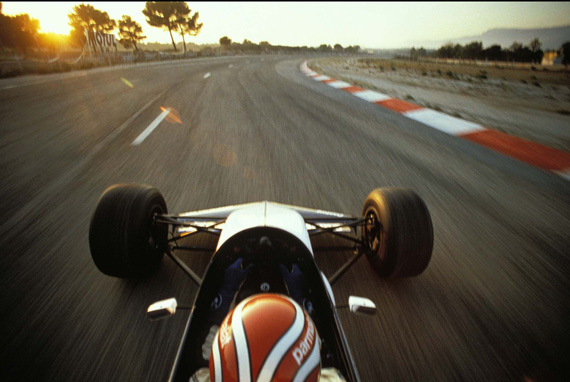
After the Renault photos were published Bernie Ecclestone allowed him to ride on the back of Nelson Piquet's Brabham which produced this stunning shot.Copyright Bernard Asset. All rights reserved.
Today Bernard Asset still covers ten or twelve grand prix races but he is specially privileged and alongside a handful other great photographers like Rainer Schleglelmilch and Paul-Henri Cahier he has an Honorary Track Pass and so can cover any event the wishes. Asset seems content with his lot. He now lives in the South of France but is still the man who put true creativity into Formula 1. If you don’t believe me have a look at the web sites of Asset (www.bernardasset.com), Darren Heath and Lorenzo Bellanca and be prepared to be impressed. Heath still sees Asset at events. “When I see Bernard at races now I always greet him with ‘Argh the doyen’. He responds by saying ‘Argh the master’ which as you can imagine makes me very proud!”
Race organizers
It was at our local vintage meet at Paul Ricard that I ran into Bernard Asset. But I would also like to mention a bit about the organizers, the V de V Sports Group. For ten years, alongside the usual work, I, along with my colleague Hugh McCaig, ran all the motor racing in Scotland and so I understand the multitude of problems in getting large groups of disparate people together and trying to get them to obey rules, deal with the authorities and all that.
Though the historic race suffered from a number of non-starters there were some interesting cars around including a Mark VIII Elva driven by Yann Le Calvez which is one of the very few Mark VIIIs built and one of the last still to be racing, even in historics. This was one of the Elvas powered by the ubiquitous BMW 2 liter engines and Le Calvez did well to finish third overall behind a spyder Lola T70 and a Lola T210.
